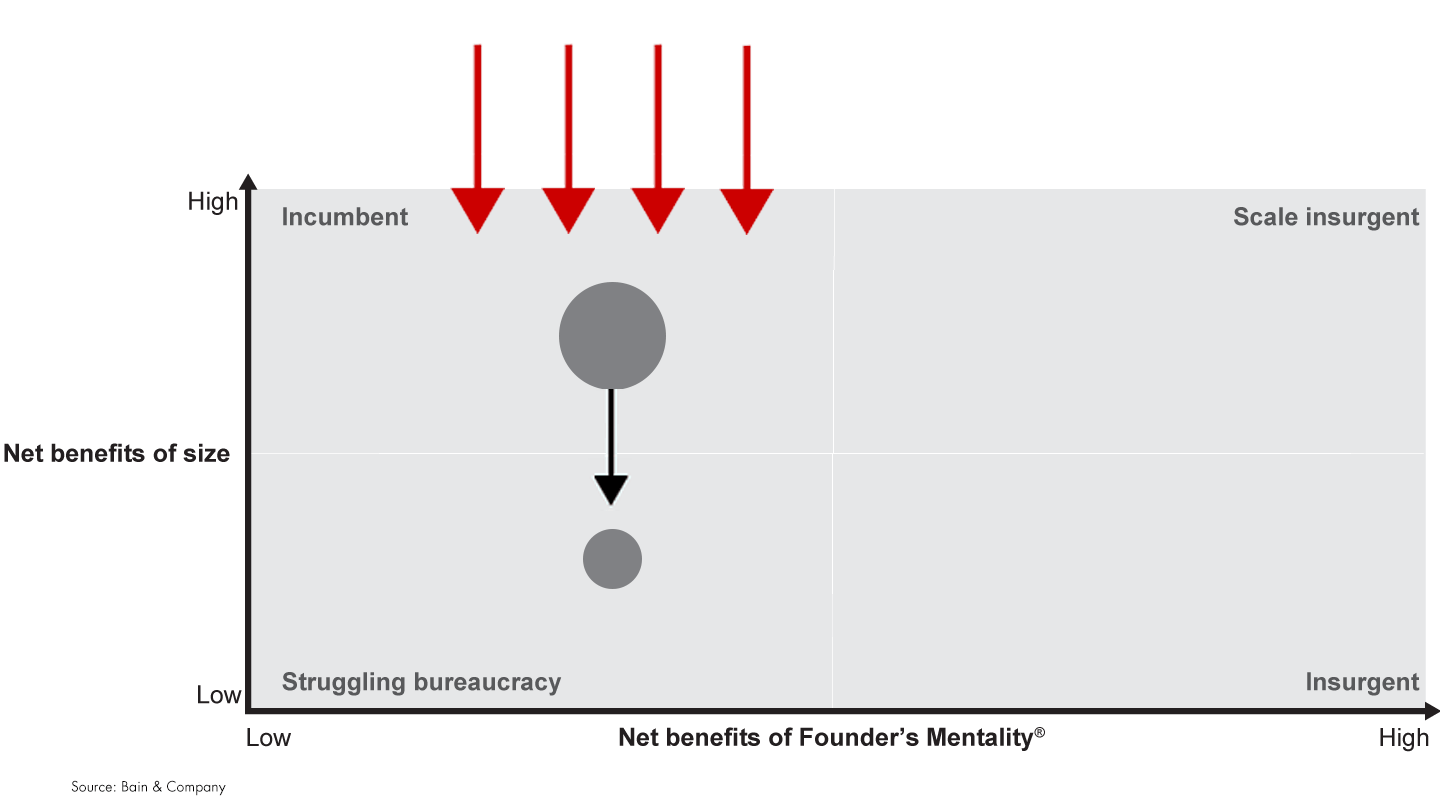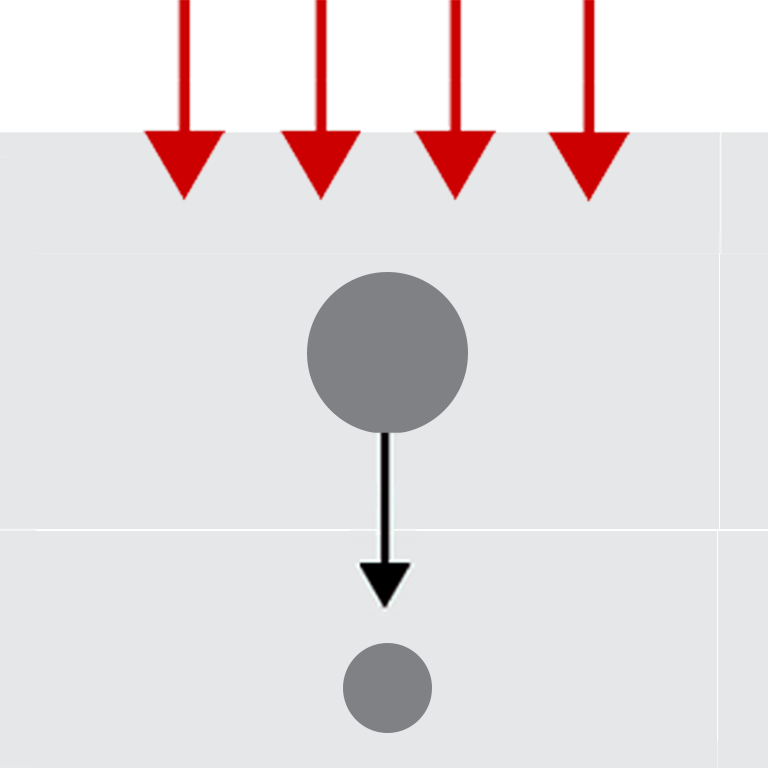Founder's Mentality Blog
The power of incumbency can be formidable for a company that remains focused on its core mission. But just as insurgent companies encounter a predictable set of forces that erode the Founder’s Mentality® as they grow, large multinationals struggle against forces that threaten to turn the power of incumbency into the pain of bureaucracy. We refer to those forces as the southward winds.

It's a simple fact that the next 1% of growth from an incumbent company creates a lot more complexity then the next 1% from an insurgent. But that doesn't have to be a negative. Incumbents are multinational businesses with complex product portfolios geared to serve complex customer needs. Managed effectively, that can actually be a competitive advantage. Consumer goods companies that can efficiently serve the complex needs of multinational retailers, for instance, gain a crucial edge on those that can't. Construction companies adept at delivering bespoke solutions to solve convoluted customer demands can command higher margins.
But too often, unchecked complexity is the silent killer of growth. It sucks energy from the organization, creating tired leaders. And tired leaders become distracted from the key mission—translating strategy into simple Repeatable Models® that give the front line the skills and routines they need to serve the customer better.

About the Founder's Mentality
The three elements of the Founder's Mentality help companies sustain performance while avoiding the inevitable crises of growth.
Expanding into new businesses and markets creates dense portfolios and the continuous need for reorganization. To improve the flow of information, companies tend to rely on new layers of management and processes. That inevitably generates more complexity not less, creating too many management voices communicating their own versions of strategy and operating plans throughout the corporation. Attempts to manage the resulting dissonance lead to even more layers of complexity, and pretty soon, a good day at the office means creating alignment rather than action on how to beat the competition or better serve customers. The growing inward focus slowly dulls competitiveness.
Leaders can break this complexity doom loop by using Repeatable Models to refocus attention on "the core of the core"—the company's most essential customers and its clearest sources of differentiation. The first step is to ask themselves three simple questions:
- Who are our most profitable advocates? Who are the customers who like us, recommend us to others and prove their commitment to us through their continued purchases?
- What is the Repeatable Model that serves our customers profitably and creates advocacy? In other words, what is it we do that keeps them coming back for more (not what we think brings them back, but what they say brings them back)?
- Who delivers that model? Who recommends decisions, who makes decisions and who acts on decisions? This is the critical team working with the critical customers on our most differentiated activities.
Once leaders have defined the core of the core, the essential question becomes: What do we need to add back and is the customer willing to pay for the resulting complexity? We have found this straightforward litmus test can liberate the organization from a huge amount of complexity.

Founder's Mentality®: The Southward Winds
Large multinationals often struggle against forces that threaten to turn the power of incumbency into the pain of bureaucracy.
Founder's Mentality®, Great Repeatable Models® and Repeatable Models® are registered trademarks of Bain & Company, Inc.
